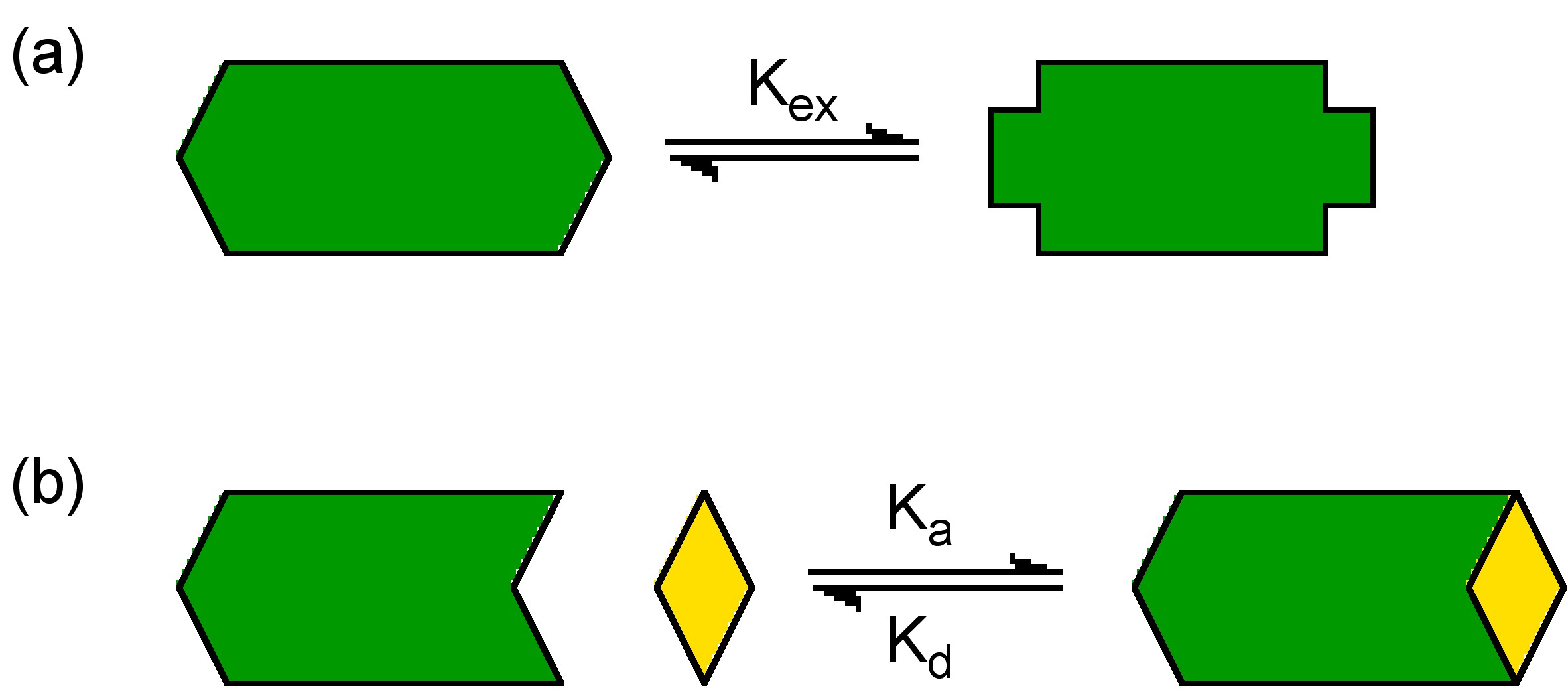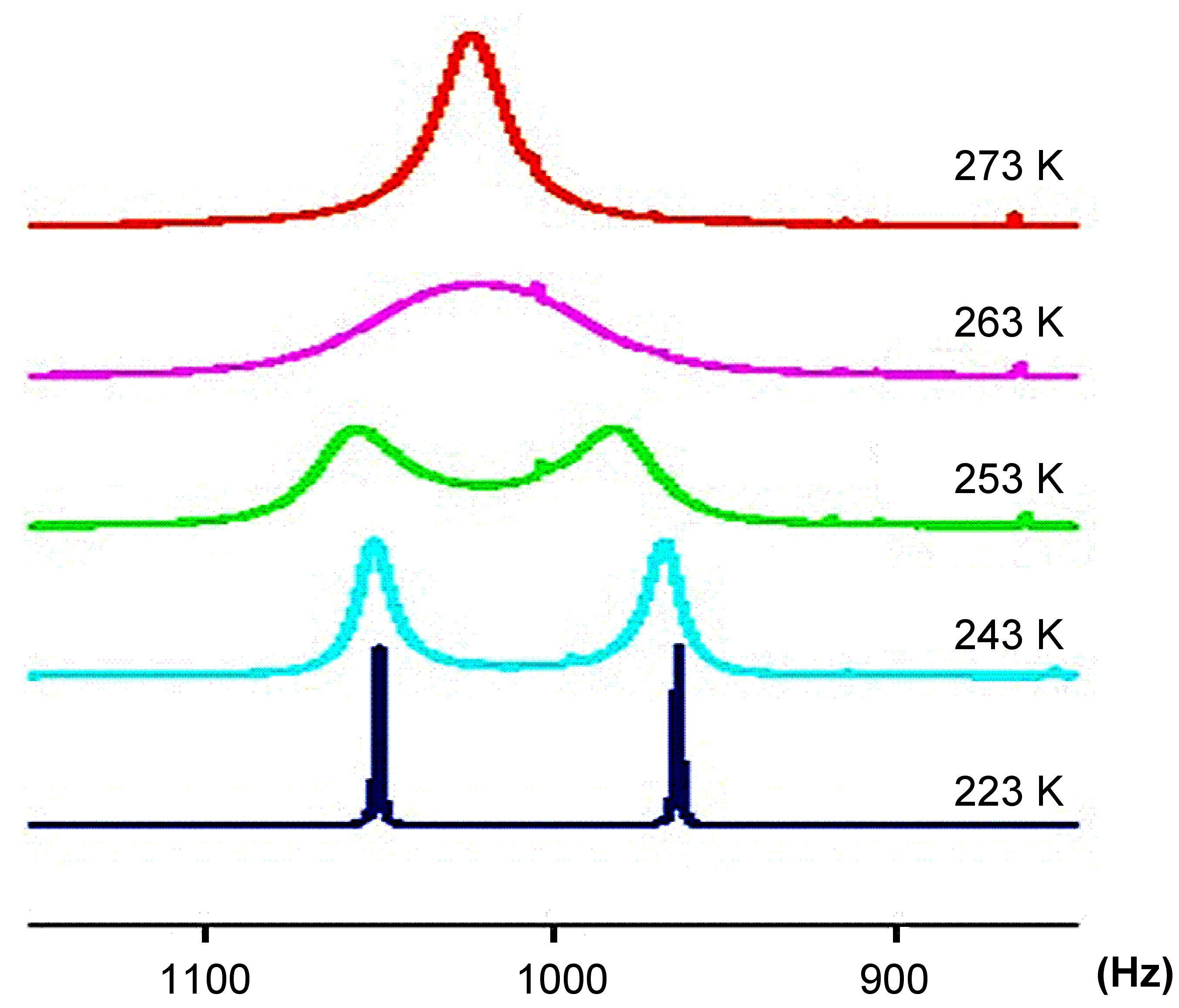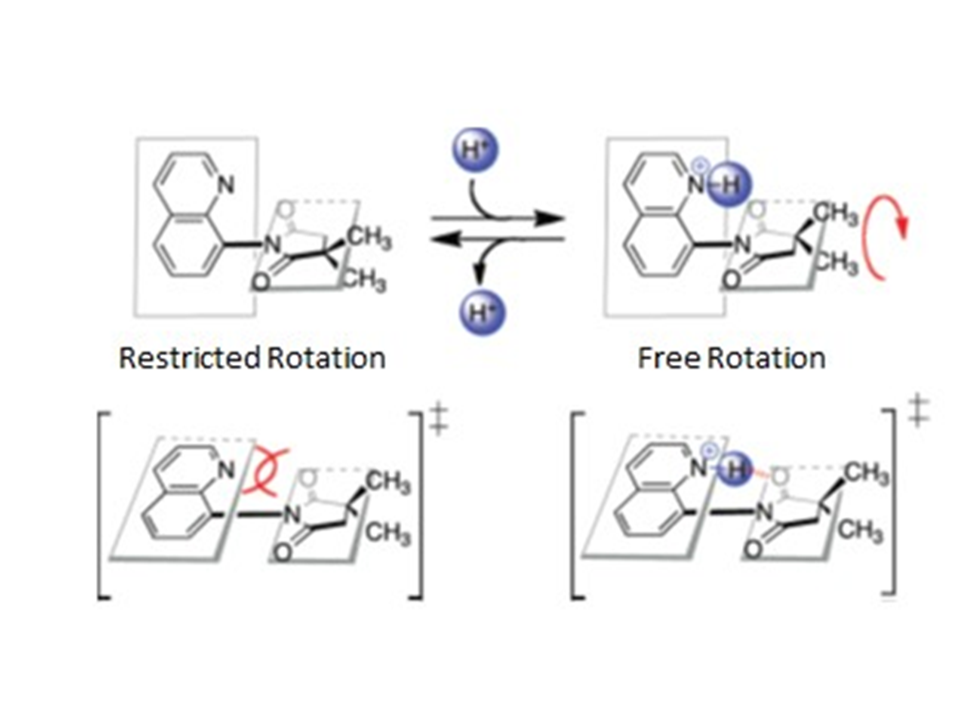6.1: NMR of Dynamic Systems- An Overview
- Page ID
- 55900
The study of conformational and chemical equilibrium is an important part of understanding chemical species in solution. NMR is one of the most useful and easiest to use tools for such kinds of work. Figure \(\PageIndex{1}\) The study of conformational and chemical equilibrium is an important part of understanding chemical species in solution. NMR is one of the most useful and easiest to use tools for such kinds of work.
Chemical equilibrium is defined as the state in which both reactants and products (of a chemical reaction) are present at concentrations which have no further tendency to change with time. Such a state results when the forward reaction proceeds at the same rate (i.e., Ka in Figure \(\PageIndex{1}\) b) as the reverse reaction (i.e., Kd in Figure \(\PageIndex{1}\) b). The reaction rates of the forward and reverse reactions are generally not zero but, being equal, there are no net changes in the concentrations of the reactant and product. This process is called dynamic equilibrium.
Conformational isomerism is a form of stereoisomerism in which the isomers can be interconverted exclusively by rotations about formally single bonds. Conformational isomers are distinct from the other classes of stereoisomers for which interconversion necessarily involves breaking and reforming of chemical bonds. The rotational barrier, or barrier to rotation, is the activation energy required to interconvert rotamers. The equilibrium population of different conformers follows a Boltzmann distribution.

If we consider a simple system (Figure \(\PageIndex{2}\))as an example of how to study conformational equilibrium. In this system, the two methyl groups (one is in red, the other blue) will exchange with each other through the rotation of the C-N bond. When the speed of the rotation is fast (faster than the NMR timescale of about 10-5s), NMR can no longer recognize the difference of the two methyl groups, which results in an average peak in the NMR spectrum (as is shown in the red spectrum in Figure \(\PageIndex{3}\)).Conversely, when the speed of the rotation is slowed by cooling (to -50 °C) the two conformations have lifetimes significantly longer that they are observable in the NMR spectrum (as is shown by the dark blue spectrum in Figure \(\PageIndex{3}\)). The changes that occur to this spectrum with varying temperature is shown in Figure \(\PageIndex{3}\), where it is clearly seen the change of the NMR spectrum with the decreasing of temperature.


Based upon the above, it should be clear that the presence of an average or separate peaks can be used as an indicator of the speed of the rotation. As such this technique is useful in probing systems such as molecular motors. One of the most fundamental problems is to confirm that the motor is really rotating, while the other is to determine the rotation speed of the motors. In this area, the dynamic NMR measurements is an ideal technique. For example, we can take a look at the molecular motor shown in Figure \(\PageIndex{4}\). This molecular motor is composed of two rigid conjugated parts, which are not in the same plane. The rotation of the C-N bond will change the conformation of the molecule, which can be shown by the variation of the peaks of the two methyl groups in NMR spectrum. For the control of the rotation speed of this particular molecule motor, the researchers added additional functionality. When the nitrogen in the aromatic ring is not protonated the repulsion between the nitrogen and the oxygen atoms is larger which prohibits the rotation of the five member ring, which separates the peaks of the two methyl groups from each other. However, when the nitrogen is protonated, the rotation barrier greatly decreases because of the formation of a more stable coplanar transition state during the rotation process. Therefore, the speed of the rotation of the rotor dramatically increases to make the two methyl groups unrecognizable by NMR spectrometry to get an average peak. The result of the NMR spectrum versus the addition of the acid is shown in Figure \(\PageIndex{5}\), which can visually tell that the rotation speed is changing.




